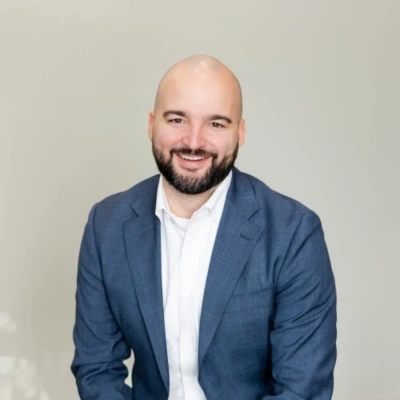Building an inclusive company culture is crucial for modern businesses seeking long-term success. This article explores effective strategies and best practices, drawing on insights from industry experts and seasoned professionals. From empowering culture champions to implementing anonymous feedback systems, discover practical steps to foster a workplace where every individual feels valued and heard.
- Empower Culture Champions in Every Team
- Uncover Shared Values Through Structured Exercises
- Collaborate with an Inclusive Facilitator
- Implement Regular Culture Retrospectives
- Prioritize Inclusion Before Visible Diversity
- Conduct Perspective Audits to Identify Biases
- Foster Cross-Cultural Collaboration for Innovation
- Run Anonymous Cultural Feedback Checkpoints
- Create Space for Personal Stories
- Rotate Leadership Through Different Locations
- Host Regular Story Circles
- Celebrate Diversity in Team Backgrounds
- Design Systems for All Minds and Bodies
- Implement Virtual Diversity Dialogues
- Adjust to Individual Work Preferences
- Rotate Meeting Facilitators for Balanced Voices
- Hire for Culture Add Not Culture Fit
- Support Flexible Work for Diverse Needs
- Create Open Sessions for Honest Dialogue
Empower Culture Champions in Every Team
To ensure our company culture remains inclusive and welcoming for employees from diverse backgrounds, one practice we’ve found to be both powerful and sustainable is the integration of “culture champions” into every team. These are employees—at all levels—who volunteer (or are nominated) to act as active listeners, advocates, and bridges within their departments. Their role isn’t performative or HR-driven; it’s rooted in real day-to-day experiences and grounded in trust.
Rather than limiting inclusion efforts to quarterly DEI workshops or top-down initiatives, we embed these champions into the rhythm of team life. They help onboard new hires, initiate small group conversations around cultural moments, and most importantly, listen for friction points that leadership might otherwise miss. These insights are brought into monthly inclusion roundtables, where patterns are discussed candidly and followed by action—whether that’s adapting internal language, improving accessibility, or revising outdated policies.
For example, one of our culture champions surfaced a subtle issue: a highly skilled team member from a non-Western country often stayed quiet in meetings because of fast-paced conversations and cultural hesitancy to interrupt. She wasn’t disengaged—just unheard. After that insight came forward, we made a simple yet effective change: every team call now includes a brief “reflection round,” where everyone has a moment to contribute before decisions are finalized. That one shift helped elevate quieter voices and has since been adopted across multiple teams.
This practice works because it decentralizes inclusion. It’s not just a policy handed down—it’s lived and shaped by the people within the company. It also ensures accountability isn’t left to one department or leadership alone. Inclusion becomes a shared responsibility.
Over time, this has changed the tone of our company culture. Employees from historically underrepresented backgrounds have shared that they feel more seen and heard. New ideas surface more often, and people speak up with greater confidence, knowing that their perspective is welcomed—not just tolerated. Inclusivity isn’t something we point to during hiring campaigns; it’s something that’s embedded into the everyday fabric of how we work, communicate, and grow together.
 Miriam Groom
Miriam Groom
CEO, Mindful Career Inc., Mindful Career Counselling
Uncover Shared Values Through Structured Exercises
One of the most effective practices I recommend is taking employees through a structured core values exercise. As humans, we tend to judge ourselves by our intentions while judging others by their actions – and this disconnect can create unnecessary barriers in diverse workplaces.
I’ve facilitated team conversations with thousands of people over the past decade, and something remarkable always happens. I’ve consistently seen that employees who may appear to come from vastly different perspectives often discover they share fundamental values – they just express them differently based on their backgrounds and experiences.
For example, one person might value “Achievement” and express it through direct communication and quick decision-making, while a colleague from a different cultural background might share that same core value but express it through careful consensus-building and relationship preservation. Without understanding each other’s underlying intentions and values, these different approaches can seem incompatible or even conflicting.
By creating space for employees to articulate their personal values and the intentions behind their actions, we build empathy and mutual understanding. This process helps teams move beyond surface-level differences to recognize the common ground that exists beneath. When people understand the “why” behind their colleagues’ behaviors, inclusion becomes natural rather than forced.
 Brian Stinson
Brian Stinson
Culture Engineer, The PEAK Fleet
Collaborate with an Inclusive Facilitator
Every leader who wants to amplify an inclusive company culture should adopt this practice. The process involves more than just basic compliance or verbal expressions because it requires establishing an environment that welcomes people from diverse backgrounds.
The best approach to achieve this goal is to collaborate with an inclusive facilitator. The team and its leader need an inclusive facilitator who can support them through the process of learning how to develop inclusion practices that extend beyond meetings.
The primary responsibility of an inclusive facilitator extends beyond meeting organization. They help set the tone. The facilitator defines essential rules that promote respectful dialogue and constructive conduct.
The team sets these rules as principles to guide their interactions during disagreements. And disagreements will happen; that’s normal. The right framework helps turn these moments into growth instead of conflict.
An inclusive facilitator’s greatest asset is strengthening active listening, which greatly benefits the team. It goes beyond understanding words, requiring people to feel valued and recognized.
Team members who adopt this behavior create a positive impact that spreads through the team. This enhances communication, fosters idea sharing, and promotes collaboration.
Discovering the shared team goals is essential. While team members have individual priorities, the group focuses on common goals that benefit the team, organization, and the individual team members.
The facilitator highlights these connections, helping the team prioritize collective success over personal agendas. This approach fosters unity, reduces rivalry, and encourages collaboration over competition.
The development of any strategy fails when psychological safety is absent from its base. That’s the starting point. People need to feel safe in order to speak up, share ideas, and take risks. They need to know they won’t face backlash for being themselves. Without that, even the best facilitation techniques will fall flat.
Psychological safety is what enables a team to transition from surface-level collaboration to something more profound, driving high performance.
It’s not a quick fix.
Building this kind of culture takes time, effort, and consistency.
But the payoff?
It’s worth it. Teams that feel safe, connected, and valued not only work well together, but they also thrive. And that’s the kind of environment every leader should strive for.
 Vivian Acquah CDE
Vivian Acquah CDE
Certified Inclusion Strategist, Amplify DEI
Implement Regular Culture Retrospectives
I recommend treating your company culture like a product that requires continuous improvement. The most effective practice we use is the ‘culture retrospective,’ an idea borrowed directly from Agile development. This is a dedicated, blameless meeting where the team regularly discusses which aspects of our work environment are fostering inclusion and which ones are creating friction. The focus is always on processes and systems, not on individuals.
This approach works because it transforms inclusion from a vague, abstract goal into a concrete, iterative practice. A passive ‘open-door policy’ puts the burden on the employee to come forward, which often doesn’t happen. A retrospective actively creates a safe, structured space for feedback. It builds the capacity for open communication and ensures that making our workplace welcoming isn’t just a one-time initiative, but a core, ongoing part of how we operate.
 Maria Matarelli
Maria Matarelli
CEO, Formula Ink
Prioritize Inclusion Before Visible Diversity
When building a truly inclusive company culture, I recommend prioritizing inclusion first—before focusing on visible diversity.
We recognize that diversity exists in every group—both visible and invisible. The Johns Hopkins Diversity Wheel shows diversity takes many forms, some recognized, others not. Certain forms still carry stigma and negative consequences.
Our approach places inclusion before diversity—reflected in our policy naming. Instead of “Equity, Diversity and Inclusion,” our framework is the Inclusion and Diversity Policy. This reflects our belief that belonging, openness, and psychological safety must come first. When we hire people with different backgrounds, they join a workplace where they’re welcomed, respected, and enabled to thrive.
How do we create this inclusive environment?
1. Policy Framework
- Inclusion and Diversity Policy: Clear responsibilities across the employee lifecycle, hiring to exit, focusing on belonging and equitable opportunity.
- Respectful Conduct Policy: Sets behavior expectations, provides reporting pathways, and encourages learning without fear of retaliation.
2. Inclusive Working Practices
- Transparent Performance Criteria: Same framework for all, with adjustments for different working patterns.
- Flexible Working: Available to all employees for personal needs, productivity, and wellbeing.
- Enhanced Leave Policies: Enhanced pay for maternity, paternity, adoption, carers’, bereavement, and sick leave based on tenure.
- Reasonable Adjustments: Ergonomic tools, neurodiversity-friendly settings, mental health support, manager guidance.
- Employee Wellbeing Groups: Voluntary groups exploring mental health, neurodiversity, confidence, and domestic abuse.
- Topic Champions: Confidential support for mental health, menopause, neurodiversity, and domestic abuse.
- Feedback Culture: Regular sessions and exit interviews with findings shared with leadership.
3. Learning and Development
- Unconscious Bias: Human-centered approach helping employees challenge assumptions.
- Building Trust: Using Feltman and Lencioni models for psychological safety and team dynamics.
- Communication: Training in feedback, communication theory, and intercultural dynamics using Erin Meyer’s Culture Map.
Inclusion and belonging are our culture’s foundation. When we prioritize inclusion first, we create a space where all employees can contribute fully, grow professionally, and feel valued.
When diversity increases—as it naturally will in inclusive environments—it strengthens culture.
 Suezanne Bennett
Suezanne Bennett
Associate Director – People Experience, Nigel Wright Group
Conduct Perspective Audits to Identify Biases
We prioritize “perspective auditing,” where we regularly examine whether our recruiting approaches inadvertently exclude qualified candidates from non-traditional backgrounds. This proactive practice has strengthened both our team culture and our ability to serve clients with diverse talent needs at SCOPE.
As an HR leader with my ASCM Professional Membership and nine years building our recruiting firm, I learned that inclusive culture requires intentional examination of unconscious biases rather than just good intentions. We regularly review our sourcing methods, interview questions, and evaluation criteria to identify potential barriers that might discourage diverse candidates from engaging with our opportunities.
The most effective practice involves quarterly team discussions where we analyze successful placements to understand what made them work, then examine whether our standard processes would have identified those same candidates if they came from different educational or professional backgrounds. This exercise reveals blind spots in our recruiting methodology.
For example, we discovered that our emphasis on “traditional supply chain experience” was causing us to overlook military veterans whose logistics backgrounds translated perfectly to civilian operations roles. We adjusted our sourcing strategies and evaluation criteria to recognize transferable skills rather than just direct industry experience.
This approach has improved our team culture because everyone understands that inclusive practices make us better recruiters, not just better people. When team members see how diverse perspectives improve our ability to identify exceptional talent, inclusion becomes a business strategy rather than just a values statement.
Audit your processes, not just your intentions. When you systematically examine whether your standard practices create barriers for diverse talent, you build genuinely inclusive cultures that drive better business results.
 Friddy Hoegener
Friddy Hoegener
Co-Founder | Head of Recruiting, SCOPE Recruiting
Foster Cross-Cultural Collaboration for Innovation
Here at Invensis Technologies, ensuring an inclusive and welcoming culture for all employees, regardless of their background, is truly at the heart of what we do. It’s about fostering an environment where everyone feels valued, respected, and empowered to contribute their best. One practice that has proven incredibly effective for Invensis is our “Cross-Cultural Collaboration Program.” This initiative actively encourages and facilitates projects and teams composed of individuals from diverse cultural, geographical, and professional backgrounds. By intentionally bringing together different perspectives on real-world business challenges, we see a natural breaking down of barriers and a rich exchange of ideas. It’s not just about compliance; it’s about recognizing that diversity fuels innovation and enhances problem-solving. Through these collaborations, team members gain a deeper appreciation for differing viewpoints and working styles, building stronger bonds and a more unified, yet richly diverse, workforce. This approach consistently reinforces our belief that the collective strength of diverse minds far outweighs the sum of individual contributions.
 Anupa Rongala
Anupa Rongala
CEO, Invensis Technologies
Run Anonymous Cultural Feedback Checkpoints
We have found that inclusion isn’t something you assign to HR or promote once a year; it has to be part of how the team functions every day. One practice that has worked well for us is running anonymous cultural feedback checkpoints every two months.
We ask open-ended questions, not just ratings. This approach gives people space to share what they’re experiencing, not just how they’re performing. We pay attention to signals like psychological safety, team dynamics, and whether people feel heard.
The real difference is in how we follow up. People need to see that what they say leads to changes. That’s how trust builds, and once there’s trust, people show up more fully.
Also, we train managers, not just HR, to notice bias in subtle forms. For example, we ask them to review how opportunities are assigned or who gets visibility in meetings. Inclusion becomes everyone’s job, not just a policy.
Listening consistently and responding visibly – these two things have helped us create a culture where people from different backgrounds feel like they belong.
 Vikrant Bhalodia
Vikrant Bhalodia
Head of Marketing & People Ops, WeblineIndia
Create Space for Personal Stories
For me, creating a culture of belonging and inclusion starts with something very basic: ensuring that individuals feel comfortable being themselves in the workplace. This is not so that everyone has to be the same. We try to listen more, assume less, and make space for people to be where they are.
Something we do easily is encourage people to discuss a bit about where they are from—not necessarily in the work environment, but in life. This might happen in a one-on-one meeting, team meeting, or just general Slack chat. It builds knowledge and trust over a period of time. You start to understand that not everyone communicates alike and doesn’t expect the same things—and that’s good.
I’ve found that if you give people room to be listened to—without pressure or criticism—the culture will automatically become more inclusive. It’s not about getting it just right. It’s about staying curious, staying open, and showing people they matter. That’s where connection begins.
 Vasilii Kiselev
Vasilii Kiselev
CEO & Co-Founder, Legacy Online School
Rotate Leadership Through Different Locations
Running a motorcycle rental business across 82 countries taught me something unexpected about inclusion – it happens in the small moments, not the boardroom presentations. Real inclusivity means people actually speak up when they see problems, not just nod along during diversity meetings.
Our team in Bangkok once told me our booking app was confusing because it assumed everyone reads left-to-right. Seemingly minor, fixing that interface boosted our bookings there by 31 percent in two months. We only heard about it because someone from our local team felt comfortable enough to challenge how we’d always done things. That candid feedback saved us from losing market share to local competitors.
The one thing that works? Skip the formal mentorship programs. Instead, rotate your leadership team through different office locations – actually work there for a week, not just visit. When I spent time in our Sao Paulo office, I learned our Brazilian customers prefer WhatsApp over email for support. This simple change doubled our response rates. You can’t build inclusive culture from a distance or through policies alone.
 Carlos Nasillo
Carlos Nasillo
CEO, Riderly
Host Regular Story Circles
I’ll never forget my first day at a new company, nervously clutching my coffee, scanning for a familiar face. What made me stay, and truly thrive, was a simple but powerful practice: intentional listening.
Here’s what that looks like in real life: every month, my team hosts ‘Story Circles’—a laid-back, bring-your-lunch gathering where anyone can share a piece of their personal or cultural story. From Diwali celebrations to navigating challenges as a first-generation college grad, these moments transform colleagues into allies. It’s never just about checkbox diversity quotas; it’s about giving space for everyone to be heard.
Why is this so effective? Because people from different backgrounds often feel invisible in traditional, top-down meetings. But in a Story Circle, you see nods of recognition, bursts of laughter, and sometimes even tears. Those are the moments connection is born. After one session, a quieter teammate shared how they finally felt “seen.” That’s the magic: when your voice matters, the whole room shifts.
If you want one practice to champion, start small. Create regular spaces for genuine storytelling. Maybe it’s a digital channel for sharing “my culture in pictures,” or five minutes in a team call just to honor a holiday unfamiliar to most. Root inclusion in everyday habits, not just grand company statements.
Trust me, when people feel truly welcome, they bring their best, quirkiest, creative selves to work—and your company won’t just be inclusive, it’ll be unstoppable.
 Nik Aggar
Nik Aggar
Business Development Manager, Outstaff Your Team
Celebrate Diversity in Team Backgrounds
Building an inclusive company culture starts with intention and daily practice—not just policy. As a founder, I prioritize open conversations about culture and identity from the very beginning, inviting team members to share their perspectives, traditions, and working styles. With a small team, I make it a point to learn what makes each person feel respected and valued, and I solicit feedback on areas where we can improve.
One practice I recommend is to celebrate the diversity in your team’s backgrounds—not just acknowledge it. That might involve spotlighting different cultural holidays, encouraging storytelling in meetings, or making space for employees to educate the team about traditions that are meaningful to them. When people see that their individuality is celebrated and woven into how they work together, it sets a powerful tone of belonging from the very start.
 Kristin Marquet
Kristin Marquet
Founder & Creative Director, Marquet Media
Design Systems for All Minds and Bodies
Inclusion is often thought of as an add-on, but it’s the architecture. I approach culture-building the way I approached classroom culture design as a teacher: start with the audience in mind. In this case, the “audience” is every team member, with their whole self: identity, neurotype, lived experience, caregiving responsibilities, abilities, communication style… we fully consider the whole person.
My core recommendation is to start with Universal Design principles – create systems that work for all minds and bodies without requiring someone to disclose or advocate for themselves just to belong. As the founder of multiple community-centered ventures, including a 9,000+ member women’s entrepreneurship network, I’ve learned that culture lives in the details, such as calendar invites, meetings, and feedback methods. I honor rest and allow for interaction in settings and at paces that are varied and flexible. I am open about my ADHD to eliminate shame around needing support.
We see this approach in the best classrooms and environments that foster consistent excellence. These environments are more innovative and productive than those which require masking and coping to get through the day.
Examples of this in practice:
- Make growth part of the culture and teach practical strategies like time blocking and the Eisenhower matrix for prioritization.
- Normalize asynchronous communication and remote work as core practices.
- Create “working style” profiles that outline how team members focus best, receive feedback, and what support helps them thrive.
- Offer body doubling sessions and optional check-ins for calendar cleanup and organization.
- Provide low-sensory work settings, headphones, and clear signage for interruption preferences.
- Maintain healthy boundaries – no 24/7 availability expectations.
- Start meetings with energy check-ins and close with “what’s one win you want to share?”
- Include cultural observances and awareness days on the calendar with encouraged discussion.
The future of work is built on belonging. When people feel safe and seen, they do their best work. This isn’t just good leadership; it’s good business.
 Sandra Bean
Sandra Bean
Founder + Strategist, Global Girl Boss
Implement Virtual Diversity Dialogues
As a remote-first company, developing an inclusive culture across remote boundaries requires purposeful effort. While in-person interactions can naturally create connections, we must be intentional about creating spaces for everyone (regardless of their background) to feel seen, heard, and valued when we are not in front of each other. One practice that has shown success in our company is the implementation of ‘Diversity Dialogues’. These dialogues are essentially informal ‘safe spaces’ for employees to come together virtually and discuss their experiences, challenges, etc., with co-workers, regardless of their capacity, role, or seniority. The purpose is not to solve everything but to create a space for sharing, vulnerability, and celebrating our differences.
The value of these remote dialogue sessions can be substantial, especially in an environment where employees may feel isolated and disconnected. Remote work can also enhance a sense of ‘otherness’ for some people from diverse backgrounds, so we have committed to incorporating these dialogues into our culture. As a result of fostering open communication between employees on authentic and empathetic interests, we have intentionally connected on a deeper level, beyond just ‘work’ communication.
 Gianluca Ferruggia
Gianluca Ferruggia
General Manager, DesignRush
Adjust to Individual Work Preferences
A practice that’s really helped at my agency is having honest check-ins before projects even begin – not just about timelines or tasks, but about how we approach this project together. We started asking each team member how they prefer to communicate, if there’s anything they need for support, or if there are things we should avoid. It sounds simple, but it’s changed the tone of our collaborations.
For example, one designer let us know early on that they don’t love being put on the spot in meetings and prefer to share ideas in writing first. So we started sending out prompts ahead of time. That one adjustment made our meetings more thoughtful and gave everyone a better shot at being heard.
If there’s one practice I’d recommend, it’s to build in space for people to tell you how they work best, and then actually adjust to that. It shows respect, and it helps people from different backgrounds feel like they don’t have to change who they are just to fit in.
 Stephan Baum
Stephan Baum
Managing Director, Brussobaum
Rotate Meeting Facilitators for Balanced Voices
Throughout my time building Carepatron, I’ve found that creating an inclusive and welcoming culture comes down to consistency. It’s not about one-off initiatives or statements. It’s about the small, everyday practices that shape how people show up and feel valued.
One practice that has worked well for us is running regular team reflection sessions focused on communication and collaboration styles. These sessions provide everyone with an opportunity to share how they work best, what helps them feel included, and what others may not realize about their preferences or background. It opens the door for honest conversations that go beyond surface-level inclusion and delve into real, practical changes. Examples include adjusting meeting times for different time zones or ensuring everyone gets equal airtime in discussions.
Another habit we’ve developed is rotating who facilitates team meetings. This gives different voices a chance to lead and changes the energy in a way that makes the team feel more balanced and cohesive. Inclusion works best when it’s woven into the structure of how a team operates. If your daily habits make space for people to be heard and seen, the culture will reflect that.
 Jamie Frew
Jamie Frew
CEO, Carepatron
Hire for Culture Add Not Culture Fit
At Ignite Digital, we don’t hire for “culture fit”; we hire for “culture add.” This shift alone has reshaped our team dynamic, welcoming a broader mix of voices and experiences. One core practice we rely on is structured, bias-resistant interviews that focus on problem-solving, not personality matching. For example, while scaling operations for Mississauga Foot Clinic, our internal collaboration between marketers, analysts, and developers, many of whom brought completely different cultural backgrounds, directly led to a 537% increase in new patient traffic. That project succeeded because ideas were challenged, not echoed.
According to the U.S. Equal Employment Opportunity Commission, inclusive companies outperform their competitors by up to 35% in profitability. We’ve seen that firsthand. Diverse teams build better strategies because they anticipate more scenarios. By creating a workplace where every perspective is not just heard but used to drive outcomes, we’ve made inclusion not just a value but a growth strategy.
 Matthew Goulart
Matthew Goulart
Founder, Ignite Digital
Support Flexible Work for Diverse Needs
At King of Handmade, inclusion means recognizing the real lives behind the craft. Many of our artisans are women who prefer working from home so they can stay close to their children, and we fully support that. By offering flexible ways to collaborate, we ensure that every woman can contribute her talent without sacrificing her family life. We don’t believe in forcing people into a system that doesn’t respect their rhythm — we adapt to them. Our collections proudly reflect the voices, traditions, and creativity of these women.
Inclusion in handmade isn’t a goal for us — it’s simply part of our Moroccan culture.
 ANAS ZOUHDI
ANAS ZOUHDI
Founder & CEO, King of Handmade
Create Open Sessions for Honest Dialogue
At Nest Navigate, we always say, “There’s no wrong idea here.” That’s not just a feel-good phrase — it’s how we build. Whether someone’s a design intern or on the leadership team, every voice counts.
One thing we do that really works is hold regular open sessions. No agenda, just space to talk — about ideas, roadblocks, anything. It helps us stay honest and inclusive, while still making data-driven decisions that move us forward.
That’s how we make sure inclusivity isn’t performative — it’s part of how we work.
Curious how we’re building a more inclusive path to homeownership, too? Visit nestnavigate.com
 Eric Chebil
Eric Chebil
CEO & Founder, Nest Navigate

